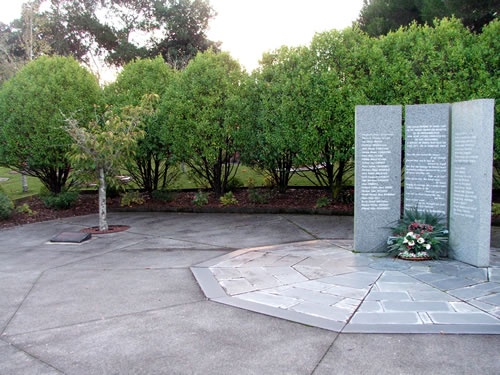Using this learning guide
This learning guide is not a downloadable resource to put in front of ākonga (students). Kaiako (teachers) should select from the guide and adapt suggested activities as they see fit to meet the needs of their students.
In this learning guide, ākonga will:
- Consider how historical empathy can help us to look beyond what happened and why, to consider the meaning this history had for the people involved.
- Explore the differing perspectives of people directly connected to the Erebus accident.
Faces of the victims
To mark the 40th anniversary of the Erebus accident, New Zealand Herald reporter, Cherie Howie, tracked down some of the family of passengers and crew from all over the world to ask them to write about their loved ones. This interactive memorial, by data journalist Chris Knox was the result.
These pen portraits are a powerful way of reminding readers that these were real people. There were many reasons why they boarded the flight that morning. They had lives, hopes, and dreams that were not defined by Erebus alone. Here we get some sense of what the loss of a loved one, or in some cases, loved ones, meant for their whanau and friends.
Erebus interactive memorial – New Zealand Herald Insights
What is historical empathy?
Historical empathy is the ability to see and understand events from the point of view of those who experienced them first-hand. It allows us to appreciate the feelings, thoughts or attitudes of another person. Historical empathy can help put the past into context. It can help us to understand why an event occurred and, potentially, feel what it was like to live through that event or time. It can give us another perspective on the past.
Martyn Davison (History matters, 2012) notes that: ‘in the last 30 years it has sometimes been more tempting to think about the reasons why not to teach historical empathy. This is because it has often been associated with sympathy, unrestrained imagination, and over-identification, leading to the claim that it produces a “let’s pretend” version of history.’
Historical empathy seeks to look beyond what happened and why, to consider the meaning this history had for the people who were there, and sometimes for those who were indirectly involved. Looking at the past with empathy allows us to understand and appreciate the context, motives, and actions of people, without necessarily endorsing them. Historical empathy works as an antidote to the dismissive quip, ‘they were all idiots back then.’
Martyn Davison, 'Teaching historical empathy and the 1915 Gallipoli campaign' (PDF, 258KB)
Does using historical empathy make for difficult history?
The Erebus accident caused a wide range of human emotions, including anger, blame, grief and acceptance. Our teaching of history does not always address these emotions. They can arouse feelings that are uncomfortable, unsettling and confrontational. Incorporating emotional literacy in the teaching of history can help manage that difficulty and promote students’ personal, social and emotional development.
How often do we explicitly teach historical empathy? Brett Christmas lost his father, Frank, on Flight TE901. When I talked to him shortly before the 43rd anniversary of the accident in 2022, he offered three words that he believed summarised the emotional fallout from Erebus: Truth, Justice, and Reconciliation. In exploring Erebus through a lens of historical empathy, it is worth keeping these words in mind.
Historical empathy – Te Akomanga
Analysing values, perspectives and decisions – Te Akomanga
Emotions in history: 'difficult histories' – Te Akomanga
Brené Brown on Empathy vs Sympathy – YouTube
Inquiry: Sympathy and empathy
Definition of sympathy
- Feelings of pity and sorrow for someone else's misfortune. Example: 'They had great sympathy for the flood victims.'
- Understanding between people; common feeling. Example: ‘The special sympathy between the two boys was obvious to all.’
Definition of empathy
- The ability to understand and share the feelings of another. Example: ‘He has a total lack of empathy for anybody.’
Divide ākonga into groups of 3-4, provide the definitions above, and get them to consider the following questions about sympathy and empathy:
- What are similarities and differences between the two words?
- Should we sympathise with people from history?
- What is the main difference between sympathy and empathy?
- In small groups, discuss the similarities and differences between the two words.
- Should we sympathise with people from history?
- Write down what your group believes is the main difference between sympathy and empathy.
First-hand accounts
There is value in helping ākonga develop a personal connection between themselves and historical actors. One approach to support teaching historical empathy is to consider first-hand accounts of the history you are teaching. This can help with providing historical context. The more contextual knowledge a student has, the easier it is for them to empathise with those involved. Students need to appreciate that the time, place and culture in which they live influence their perspective on history. Being able to place an event or person in their time and place can help us to better understand their actions and experiences and to better compare or evaluate them. The use of the eyewitness can help make a personal connection and recognise the human emotions and feelings involved. (Barton & Levstik, 2004).
Themes ākonga could explore, either individually or in small groups, when considering historical empathy as it relates to Erebus, include:
- Why passengers booked tickets in the first place. What was their motivation for going on this flight?
- The thoughts and feelings of whānau of those on the flight as they waited for news of what had happened on the day of the accident. What was the impact on their lives in the days, months and years after the accident?
- The experiences of those involved in Operation Overdue, both on the ice and back in New Zealand.
- The investigations into the cause of the accident and the subsequent fallout from these investigations.
Erebus: The loss of TE901 – New Zealand Airline Pilots' Association
White Silence podcast – Stuff/RNZ
Erebus – Operation Overdue – NZ On Screen
Inquiry: White Silence podcast, Episode 1
White Silence: The Break In – Stuff/RNZ
Using podcasts in the classroom can provide benefits for ākonga. Asking ākonga to write down questions or observations as they listen can develop and reinforce listening skills and support reflective thinking. Kaiako should listen to the episode before using it with students to note logical pauses that will help break the content into manageable segments. Use these pauses to ask if students have any questions or observations they would like to share.
In small groups, ākonga could discuss:
- Why were the scenic flights so popular with customers and Air New Zealand crew?
- How might those waiting for friends and family to return from the flight have felt when:
- News came through that the flight was out of contact.
- Authorities announced that the aircraft had run out of fuel.
- News broke that wreckage had been found.
- If it had been you waiting at the airport or at home listening to the news as events unfolded, how might you have felt?
- Paul Dykzeul is one of the people we hear in this episode. He lost two brothers and a brother-in-law in the accident. But for an injury which required an operation, he too would have been on the flight.
- What might Paul have been thinking as he lay in hospital as news of the missing flight broke?
- Students could choose other episodes from White silence to explore other first-hand accounts of the accident and the fallout from it.
Telling lesser-known stories
Another way of exploring historical empathy is to consider accounts that are less well known. While the controversy surrounding the cause of the Erebus accident is well known, what do we know about the feelings and reactions of those who lost loved ones in the accident that were sparked by the findings in the Chippindale and Mahon reports?
Chippindale report – NZHistory
Operation Overdue
Members of the Disaster Victim Identification (DVI) team described feeling apprehensive about the situation they found themselves in. Most had never worked on snow or ice before, and their training had not prepared them for an accident on this scale. Sergeant Greg Gilpin asked Inspector Robert (Bob) Mitchell, who led the recovery operation, ‘are you sure we’re the guys for this job?’ The youngest member of the DVI team, Stu Leighton, wondered whether the team ‘needed to be here and whether the bodies really needed to be recovered?’

New Zealand Police
Tents used by members of the Disaster Victim Identification (DVI) team near the Erebus crash site.
Few of those involved in the recovery and identification of victims from the Erebus accident could have been truly prepared for the task. They were no doubt harmed by the experience.
Stu Leighton, speaking more than 30 years after his experiences as a member of the DVI team at Erebus, described how he still ‘carried that Erebus memory with him’ and said that he ‘would never get rid of it. Noone knows exactly what we did. The effect it had was that it slowly killed me from the inside from an emotional point of view.’
Most received inadequate – if any – support in dealing with the trauma they had experienced.
Inquiry: Experiences of DVI team
The experiences of the DVI team during Operation Overdue could be discussed in a class wānanga. Use the following questions as prompts:
- How well prepared do you think the members of the police DVI team were for the task of recovering and identifying victims?
- What concerns did members of the DVI team express on their way to the crash site?
- Why do you think Stu Leighton might have questioned whether the victims’ bodies needed to be recovered?
- Why do you think Operation Overdue went ahead despite the concerns of members of the DVI team?
- We talk about there being 257 victims of the Erebus accident. Were those involved in Operation Overdue also victims of the Erebus accident?
Inquiry: Bodies of the victims
Operation Overdue was not able to recover and return all the bodies of those killed in the accident to their loved ones for a suitable farewell. In November 1980, on the first anniversary of the tragedy, a memorial at Waikumete Cemetery in Auckland was erected above the graves of the unidentified victims. Inscribed on it are the names of 44 passengers whose remains were either not identified or recovered from Antarctica.
- Do you think all of those killed in the accident should have been left at the crash site?


Community contributions